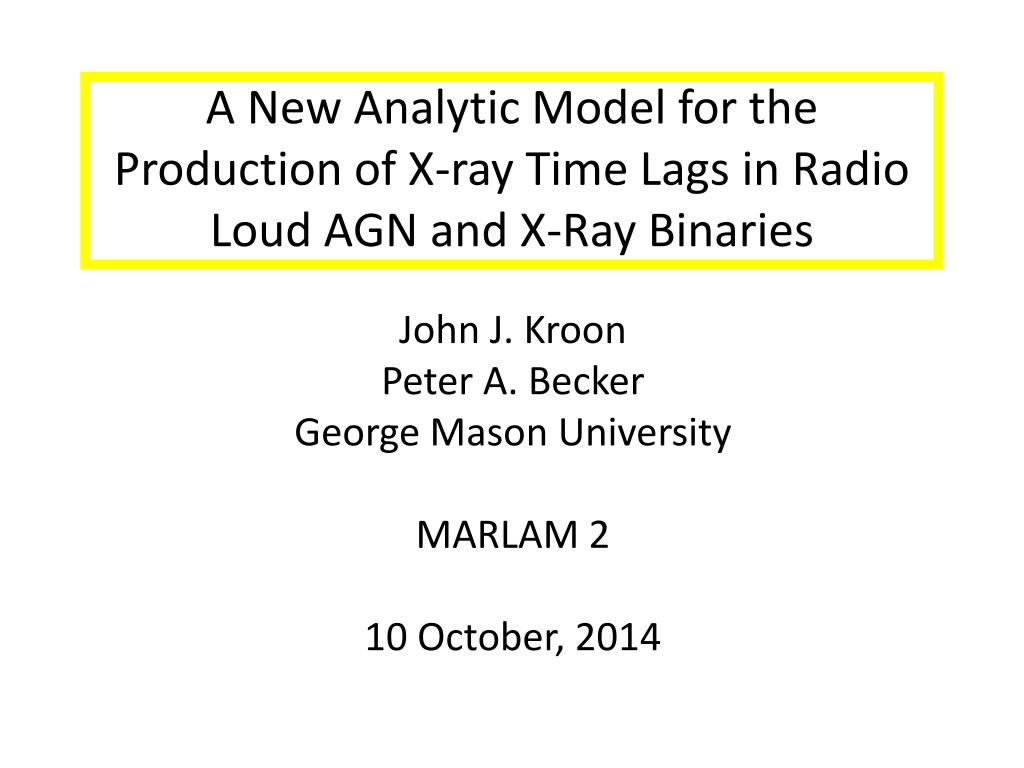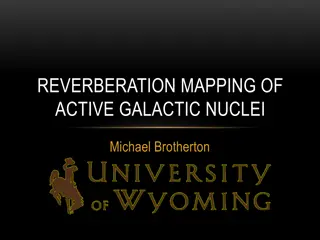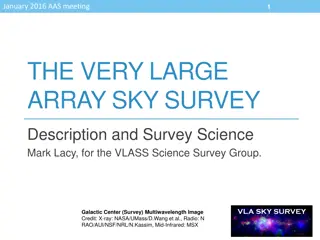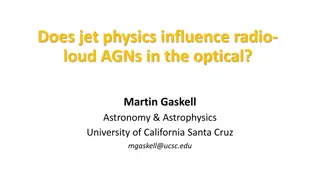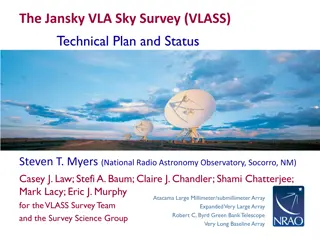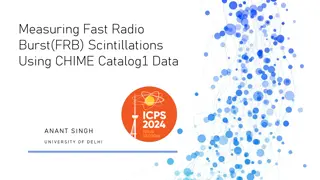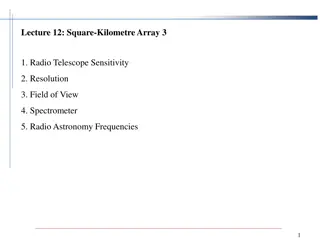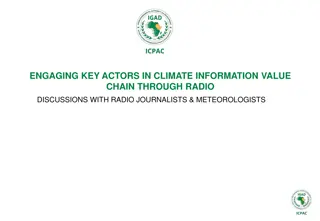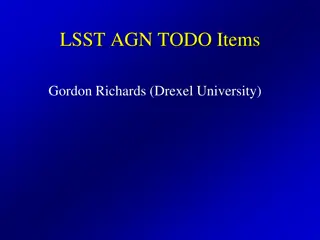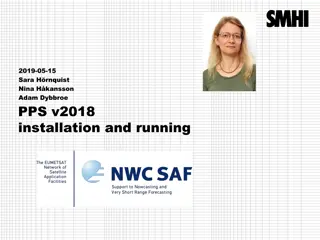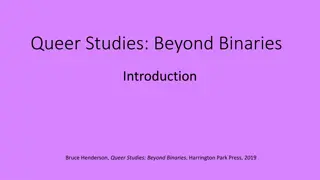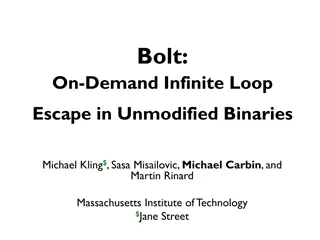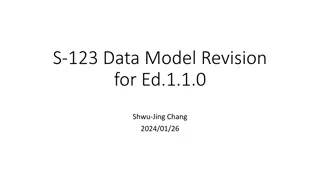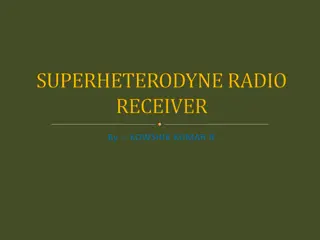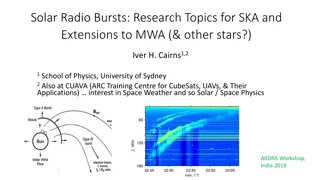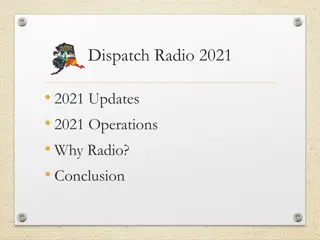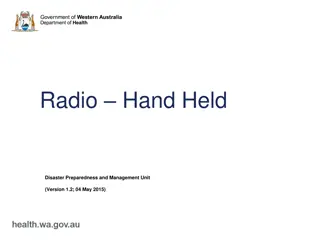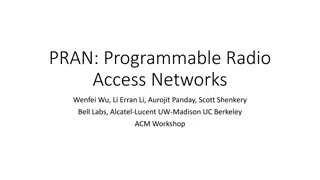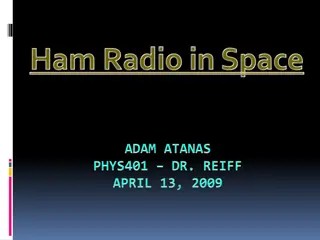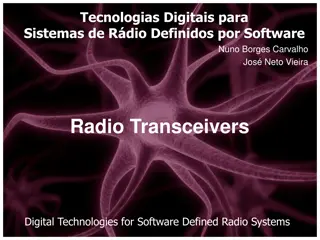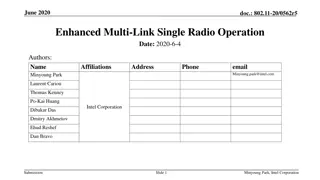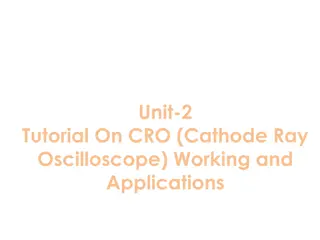Analyzing X-ray Time Lags in Radio-Loud AGN and X-Ray Binaries
This research explores the production of X-ray time lags in radio-loud AGN and X-ray binaries through analytical models and simulations. It delves into the concepts of time lags, Comptonization, injection spectra, and density profiles to understand the mechanisms behind observed phenomena, such as quasi-monochromatic injections and the dependence of time lag profiles on injection spectra. The study aims to develop computational models to provide insights into the complex nature of time lags in astrophysical systems.
Download Presentation

Please find below an Image/Link to download the presentation.
The content on the website is provided AS IS for your information and personal use only. It may not be sold, licensed, or shared on other websites without obtaining consent from the author. Download presentation by click this link. If you encounter any issues during the download, it is possible that the publisher has removed the file from their server.
E N D
Presentation Transcript
A New Analytic Model for the Production of X-ray Time Lags in Radio Loud AGN and X-Ray Binaries John J. Kroon Peter A. Becker George Mason University MARLAM 2 10 October, 2014
What is a Time Lag? Van der Klis et al. (1987) Take FT of hard and soft channel time series: H( f) and S( f) Compute Complex Cross Spectrum, C, given by: C=S*( f) H( f) Angle Arg(C) is phase lag complex conjugate Time Lag: Time lags are commonly observed from accreting black holes!
Cyg X-1 from Miyamoto et al. 1988 How are observed time lags produced? Compton? Dependence of time lag profile on injection spectrum! Time lags computed from upscattering of monoenergetic input photons Cyg X-1 D~1900 pc L~3-4*105 Lsol M~15 Msol
Hua, Kazanas, Cui (1999) Monte Carlo Simulation ne~1/r ne~1/r3/2 Homogeneous Coronae
Main Ideas HKC found quasi-monochromatic injection in an inhomogeneous cloud can reproduce the time lags. Time lag results depend sensitively on the density profile. What about the injection spectrum? Can we solve the time lag problem exactly for a variety of injection scenarios (injection spectrum AND density profile)?
Main Ideas Develop new computational model for thermal Comptonization as a mechanism for time lags. Obtain analytical solution for the fundamental Green s function for the scattering process. Green s function allows us to explore a variety of injection scenarios.
1027 8 2 keV and 11 keV FRED curves Monochromatic Injection 1027 6 Miyamoto Scenario 1027 4 Detector counts 1027 2 5 10 15 20 25 30 time (s) Monochromatic injection Fast Rise and Exponential Decay due to spatial diffusion and Compton energization More time required to reach high energies Time Lag is a weak function of Fourier frequency = m t Compton energy exchange Corona ( ) ( ) e n 4 c kT T e 2 c e : Electron Initial photon energy Blue: HARD X-ray Red:SOFT X-ray 0=0.1 keV
1014 2.5 Broadband Injection 1014 2.0 Our Model 1014 1.5 Detector 1014 1.0 counts 2 keV and 11 keV FRED Curves 1013 5.0 5 10 15 20 25 30 time (s) Exponential Decay is due to gradual escape from cloud Yields constant Time Lag at low Fourier frequency (long timescale) Broadband injection Fast Rise in both channels is due to prompt escape Rapid time variation Highest Fourier Frequency Prompt escape is coherent, therefore no Time Lag at high Fourier frequency (short timescale) Corona t ( ) ( ) = e n 4 c kT T e 2 m c e : Electron Compton energy exchange Blue: HARD X-ray Red:SOFT X-ray
Mathematical Model The transport equation is as follows: , with the definition Here we focus on the inhomogeneous Corona Where we have introduced the dimensionless parameter, Next, we collect like terms by multiplying through by z and let =1
Mathematical Model Make all the dimensionless variable substitutions and simplify Define the Fourier Pair The Fourier Transform of the INHOMOGENEOUS dimensionless Transport Equation is given by
A Word on the Quiescent Spectrum Quiescent spectrum derived from time- independent transport equation. Spectrum produced from Comptonization of continually injected monochromatic photons. Conversely, time lags are produced from sudden localized flash of bremsstrahlung seed photons.
Bremsstrahlung Need a particular solution for localized broadband injection. Bremsstrahlung energy convolution! where, , x0 is injection energy Green s Function Particular Solution
with, Theoretical Fourier transform gives time lags using Van der Klis et al. (1987) formalism
Model Parameters There are 6 free parameters Integrated model Comptonization creates both the Quiescent X-ray Spectrum and the Time Lags Three parameters are tied down by fitting the Quiescent X ray Spectrum: (zin, , ) The other parameters (z0,R, abs) are set by comparing the Time Lags with the data =sets the minimum number density =kTe/mec2;dimensionless electron temperature abs=bremsstrahlung self-absorption low cut-off energy R=physical radius of the corona z0=injection radius zin=rin/R; location of inner free-streaming radius (maximum electron number density)
Integrated Model Results for GX339-04 Te=3.56x108 K, =0.06 *=5 Set by quiescent spectrum fit SAME set of parameters for both Quiescent Spectrum and X-Ray Time Lags for GX 339-04
Homogeneous Cloud, Localized Bremsstrahlung Injection (Kroon & Becker 2014) Inhomogeneous (and Homogeneous) Cloud, Quasi-Monochromatic Localized Injection (HKC 1999) Cyg X-1 in Same State Here Cyg X-1 in Different States Here Black Curve abs=1.6 keV 0= *=2.5 R=30,000 km
Comparison for Cyg X-1 Kroon & Becker 2014/KB 2015 Analytic diffusion model Optically thick ( ~2.5-5) Small cloud (R~3-5x104 km) Cool (Te~3-7x108 K) Cyg X-1 Spectrum is fit equally well with homogeneous and inhomogeneous model. Compton y-parameter must be similar in each of these models Moderate cloud heating HKC 1999 Monte Carlo simulation Optically thin ( ~1) Large cloud (R 300,000 km) Warmer (Te~1.2x109 K) Cyg X-1 Spectrum is fit equally well with homogeneous and inhomogeneous model. Compton y-parameter must be similar in each of these models Problematic cloud heating
Conclusions Broadband injection fits the time-lag data better than monochromatic injection. Injection at outer edge of cloud works best! Both homogeneous and inhomogeneous number density profiles CAN reproduce time lags IF injection is broadband. Corona Density Profile Broadband Injection (Quasi-)Monochromatic Injection Kroon & Becker 2015 (in progress) Kroon & Becker (2014) HKC (1999) Inhomogeneous (1/r) Miyamoto (1988), Kroon & Becker (2014) Homogeneous
Appendix: Inhomogeneous Model !!! !!! Constant parameters with subscript are evaluated at outermost radius. Constant parameters with subscript 0 are evaluated at injection radius. !!! !!!
The outer and inner boundary conditions are and The series solution for the Fourier Transformed Green s function is
Derivation of Quiescent Spectrum from Distributed Monochromatic Injection
